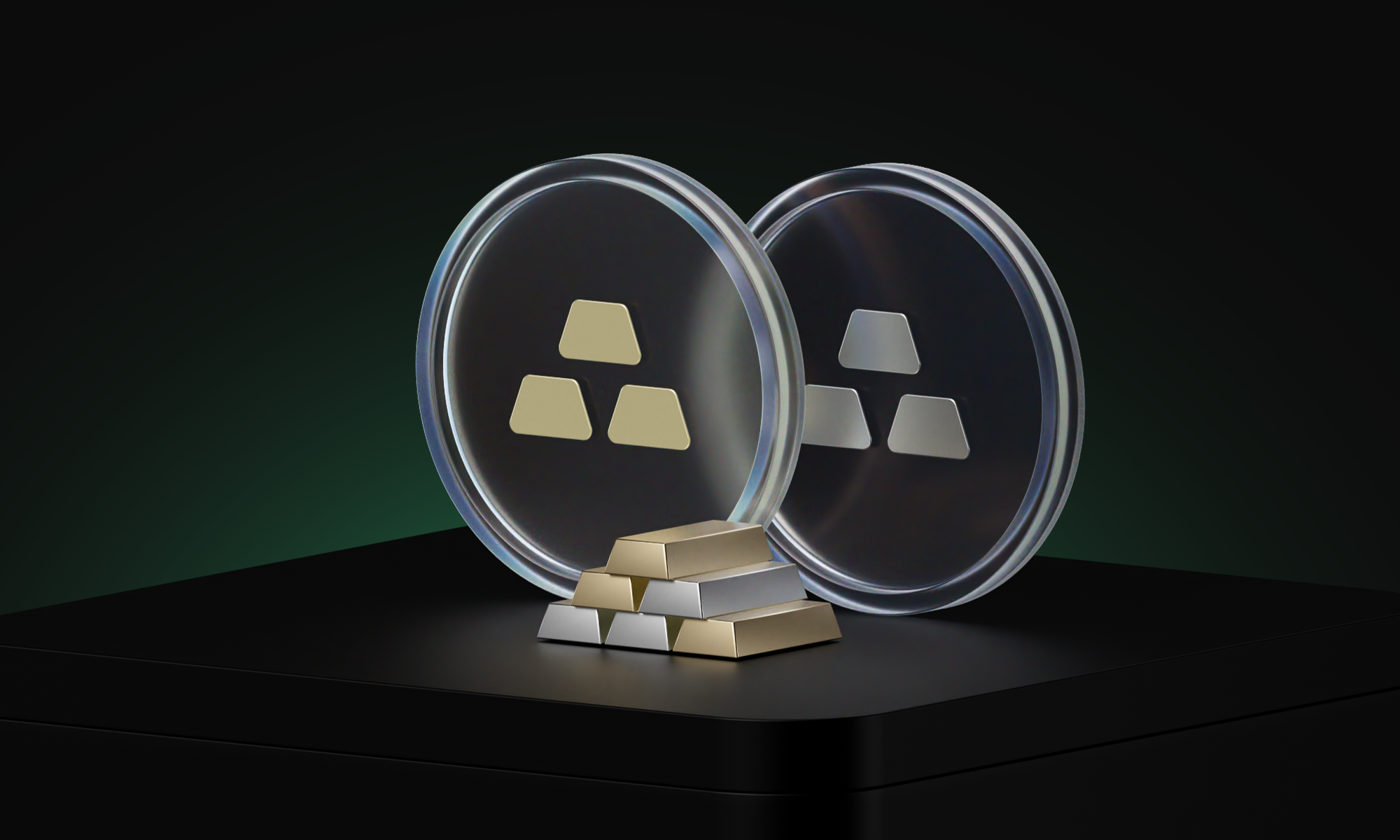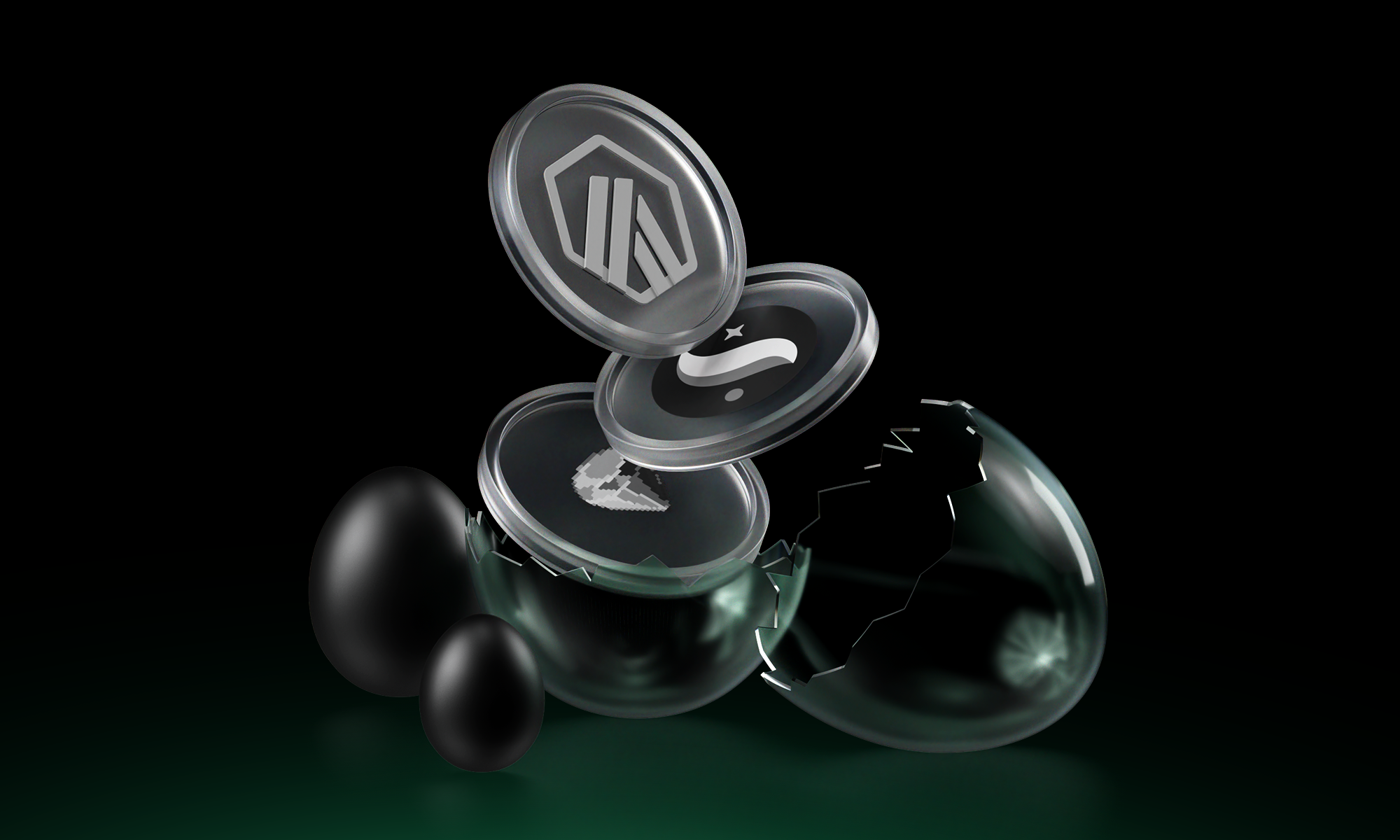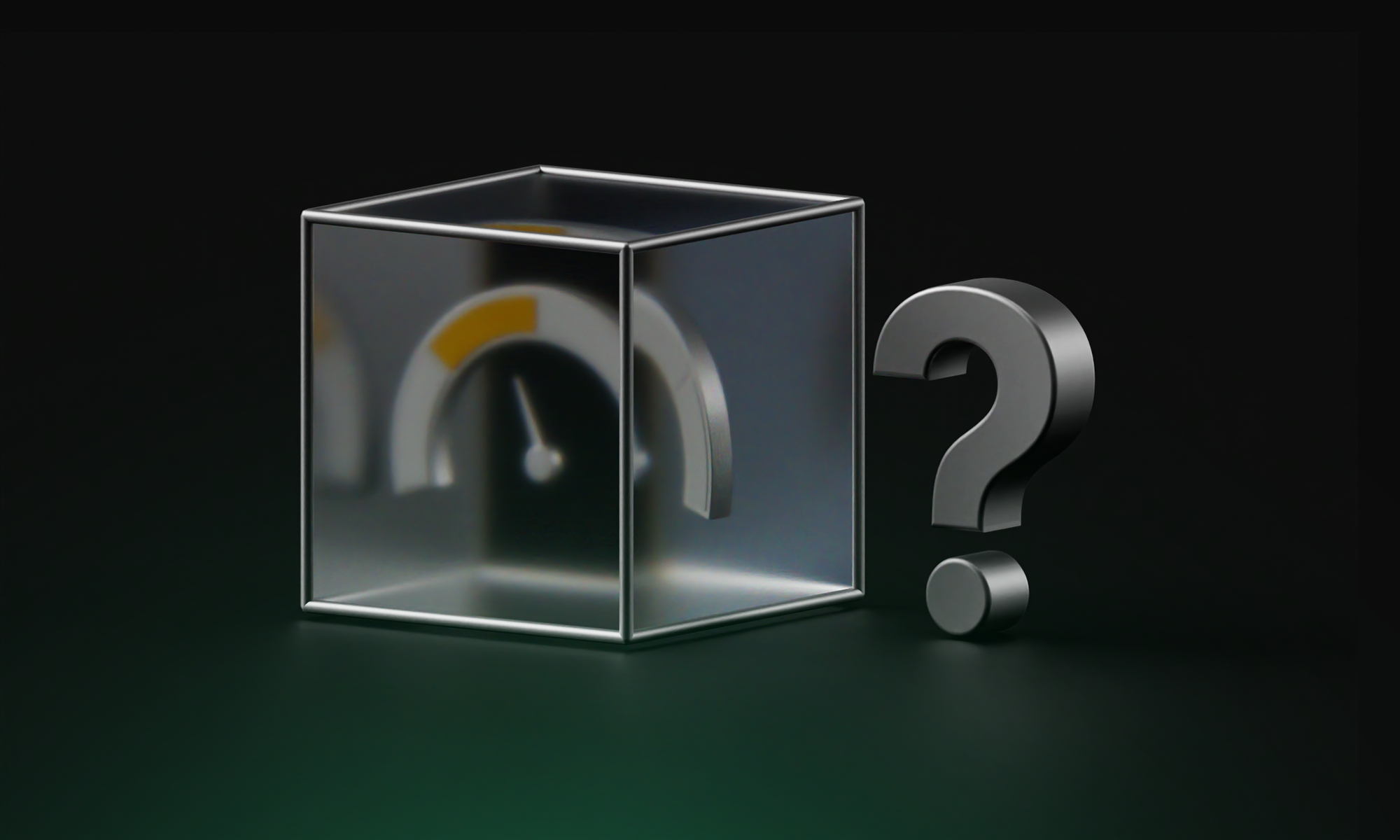While gold continues to reach record highs, silver, platinum and palladium also deserve attention in 2025. Silver balances industrial use, about 50% of demand, with a monetary role. Platinum and palladium, with more than 80% used in sectors such as automotive and electronics, more directly reflect economic activity. Adding silver, platinum and palladium can help you balance risk and tap into different parts of the economy.
Silver’s price performance over the past few years has seen dramatic swings:
March-August 2020: 143% surge, from $12 to $29.2 per ounce. Significant government support during the COVID-19 pandemic led to concerns about inflation. These fears pushed investors towards safe-haven assets like silver, which is known for playing its hedging role well in these situations.
2021-2023: Consolidation between $18 and $26. Rising real interest rates and a strengthening dollar weighed on silver prices. These two factors increase the cost of holding silver, which does not generate a yield. Historically, the correlation between silver and these two indicators is around -0.7 to -0.9 as silver tends to lose value when interest rates rise.
Since 2024: Return above $30. Anticipation of an upcoming Federal Reserve (the US central bank) rate cut has given silver a boost. Growing geopolitical tensions have also revived the appeal of this traditional safe-haven asset.
What are the market trends?
Since 2022, silver has moved in surprising ways, breaking away from its usual links to interest rates and the dollar. Despite a marked appreciation of the greenback (+15%) and a substantial rise in real rates (+200 basis points), silver has progressed by 20% from January 2022 - November 2024. This is a sign that other fundamental factors, such as robust industrial demand or renewed investor interest, have taken priority in price formation. Some also see it as a sign of increased maturity in this market.
Another useful reference point to gain perspective: accounting for inflation, the current price of about $30 remains well below historical records. The 1980 peak would correspond to $153 in today's dollars, and that of 2011 would be equivalent to $57. This puts recent gains in perspective and raises the question of silver's growth potential.
An effective hedge against inflation
When long-term price rise expectations increase, analysts consider that silver defends itself better than other assets. It happens that 10-year inflation has exceeded the key threshold of 2.5%. A Bloomberg study showed that the last 8 times this threshold was crossed, silver gained about 18% in the following 6 months.
This phenomenon is due to silver's dual status as both an investment and an industrial metal. On the one hand, silver gains value when investors seek refuge and sell their positions on more traditional assets (e.g. Equities, Bonds). On the other hand, silver remains stable because industrialists always seek to secure their supplies.
Significant catch-up potential compared to gold
The gold/silver ratio is currently close to 80. But the long-term historical average is closer to 60. Some analysts, therefore, consider that silver would be significantly undervalued relative to the yellow metal. If the ratio were to return to a normal value, silver could gain about 30% in value. If we add to this the promising prospects of industrial demand linked to the energy transition, the catch-up could be even more pronounced.
Electronics represent 25% of industrial silver demand. Silver is essential for the manufacture of printed circuits due to its excellent electrical conductivity. It is on the rise with the multiplication of connected objects and other miniaturised electronic components.
Photovoltaics represent a future market, and could account for 10% to 20% of demand by 2030. Each solar cell contains between 15 and 20 milligrams of silver. With the expected acceleration of solar energy deployment as part of the energy transition, demand for silver for this application is expected to have a bright future.
The medical sector is a promising growth relay. The annual demand for this market is estimated at $1 billion. Silver is indeed endowed with powerful natural antibacterial properties. These are utilised in targeted applications such as dressings for severe burns or catheters.
What are the risks of investing in silver?
The price of silver is historically 1.4 times more volatile than that of gold. The reason is that silver is very sensitive to fluctuations in global industrial activity. During the last three American recessions, silver fell by 20 to 30%, penalised by the violent slowdown in industrial demand. Each time, it rebounded just as sharply once the Federal Reserve eased its monetary policy.
The price of silver is also very dependent on the price of other base metals. Most silver comes from mines focused on other metals like lead or zinc. So if those slow down, the silver supply often does too.
This is what happened in 2020-2021. The prices of lead (-30%) and zinc (-35%) plunged, and their extraction logically slowed down. Silver mining production thencollapsed, causing a record supply deficit of nearly 265 million ounces (about 30% of annual demand). Therefore markets are attentive to information from "primary" silver mines, such as those operated by Pan American Silver, Hecla Mining or First Majestic Silver.
Palladium has experienced one of the most spectacular price trajectories among precious metals. Between 2016 and 2022, this relatively unknown metal delivered a significantly different narrative from that of silver:
Meteoric rise (2016 to 2020): The price rose from $470 in January 2016 to $2,875 in February 2020. That's a multiplication by more than 6 in just over four years!
Historical peak (March 2022): In the wake of Russia's invasion of Ukraine, palladium reached an unprecedented peak at $3,440 per ounce on 7 March. It briefly became the most expensive precious metal in the world, dethroning gold.
Major correction (Since 2022): The price has since collapsed by 73%, falling to $828 in August 2024 before stabilising between $900 and $1,000 since the middle of 2024. It's a severe turnaround, to say the least.
What are the market trends?
What’s surprising is that palladium prices have dropped, even though demand still outpaces supply. Prices have indeed erased more than 70% since March 2022, while the palladium market continues to display significant deficits:
- In 2022, the market showed a deficit of 389,000 ounces (about 4% of total demand)
- In 2023, the deficit reached a record of 1.35 million ounces (13% of total demand)
- In 2024, a similar deficit was estimated: about 1.28 million ounces, nearly 13% of demand
This contradiction reveals a fundamental principle of financial markets: prices reflect future expectations more than the current situation. Investors position themselves today on what they foresee for tomorrow. A figure strikingly illustrates this radical change in perception: the net speculative position on NYMEX (New York Mercantile Exchange) palladium futures contracts was -15,260 contracts in early March!
This is a historically high level of short selling. The last time this COT (Commitment of Traders) index was negative dates back to 2002. Speculators, who had been huge buyers for years are now predominantly bearish. This collective short position is one of the factors that explains why prices continued to fall despite current market deficits. Investors are playing out a future reality that they anticipate to be very different.
What are the key uses and drivers of Palladium demand?
The value of palladium lies in its catalytic efficiency, particularly at low temperatures. This makes it essential for catalytic converters in thermal and hybrid vehicles, which represent about 80% of demand. It outperforms platinum in petrol engines, converting harmful exhaust gases into less toxic emissions. Each converter uses between 2 and 7 grams, depending on engine size and emission rules.
Secondary industrial applications represent about 16% of demand:
- Oil refining and petrochemicals, where palladium is an essential catalyst for many processes
- Electronics, particularly for the manufacture of multilayer capacitors and connector coatings
- Dentistry, as a component in dental alloys (although this use is declining)
- Jewellery, mainly to whiten gold in white gold alloys
- Hydrogen purification, with palladium membranes, allowing the production of ultra-pure gas
Palladium is also used in new, emerging technologies like hydrogen fuel cells, though platinum is usually preferred because it stays more stable during use.
What are the risks of investing in palladium?
The transition to 100% electric vehicles represents the most significant risk for palladium. The reason is simple: battery electric cars simply don't use catalysts. The main source of demand is therefore expected to decline. The WPIC's supply and demand projections suggest that the market balance could radically change. More specifically, supply is currently lagging, but this should transform into a surplus. Because of this anticipation that speculators are mostly sellers, with 15,260 contracts for sale in March. This has not happened for 20 years…
The other risk for palladium is the geographical concentration of production. The supply of "primary" palladium (from mines) is concentrated at around 40% in Russia, mainly as a by-product of nickel extraction. South Africa is the second largest producer in the world, with 35%, via mines specifically dedicated to platinum group metals (PGM). Together, these two countries represent three-quarters of the world's supply.

Platinum: What are its industrial uses and investment value?
Platinum has much value for the automotive industry, representing 40% of its demand. It is used in catalytic converters for diesel engines. The growth of hybrid vehicles largely compensates for the decline of traditional engines. Hybrid automobiles require even greater loads of precious metals than conventional vehicles, to manage the complexity of their dual motorisation. Platinum therefore, still has a bright future in the automotive industry.
Jewellery represents nearly a quarter of global demand. Platinum remains particularly popular in Japan and is experiencing renewed interest in China and the United States, where its rarity and superior durability to gold, are increasingly recognised. Though a certainly niche market, it is a resilient one.
Various industrial applications represent 30%. Very versatile, platinum is used in a multitude of critical processes:
- The chemical industry, where it is an irreplaceable catalyst
- Glass manufacturing, particularly high-quality glass and optical fibre
- Electronics for hard drives, thermocouples and other components
- Oil refining for cracking heavy hydrocarbon molecules
- Environmental applications outside the automotive industry
- The medical and dental sector for implants, instruments and even certain chemotherapy drugs
What are the market trends?
Platinum has had a rather chaotic journey. After a rebound, platinum suffered a major shock following the ‘Dieselgate scandal’ in 2015, considerably reducing the market share of diesel engines in Europe. Since then, its price has stagnated around $800-1,000 per ounce, well below its historical peaks. Surprisingly, platinum is now priced below palladium – something we haven’t seen in recent years. But several signs point to a potential comeback.
Market deficits persist. According to data from the World Platinum Investment Council, the supply of platinum will continue to lag significantly. These deficits represent over 10% of the total annual supply (about 8 million ounces).
Supply constraints are structural. The South African mining industry, which provides about 72% of global platinum production, faces challenges: workforce reduction, decreased investment budgets, closure or cocoon maintenance of several operations, such as shaft 4B at Marikana or the Merensky mine at Two Rivers. Several expansion projects are postponed, like the Bafokeng Styldrift and Bokoni mines.
These factors suggest that supply could not succeed in aligning with demand. Recycling, although growing, would not be sufficient to balance the market. Unlike palladium, platinum suffers from a decrease in the number of diesel vehicles available for recycling, a direct consequence of Dieselgate.
All these factors lead analysts to think platinum could gain much value during the next ten years. A potential that investors are beginning to recognise, as evidenced by the explosion of investment demand in China, which has multiplied eight times in five years.
What are the considerations for investing in platinum?
Historically, platinum traded above the price of gold, reflecting its greater scarcity and multiple vital industrial applications. The current ratio is 0.55: in other words, the cost of platinum is 45% lower than that of gold, while the long-term average is closer to 1. This suggests significant catch-up potential. A return of this ratio to its "normal" value would imply almost double the platinum price!
For many analysts interested in platinum, prices could remain relatively stable in the short term (2025 horizon), simply because current stocks can still meet immediate demand. However, in the medium term(2026-2028), many think a price increase is inevitable as market deficits persist and stocks are depleted.
In the long term (post-2028), platinum could benefit considerably from the development of the hydrogen economy, where it plays a central and difficult-to-substitute role in fuel cells. If hydrogen fulfils its promises, platinum could experience a "supercycle" comparable to palladium in the 2010s with the rise of petrol vehicles.
Silver, palladium or platinum: Which is the standout investment for 2025?
Every investor has their own objectives and risk tolerance. Here are some keys to understanding which precious metal best matches your profile.
For active traders looking for short-term opportunities
Silver offers a good risk/return ratio and strong liquidity. It is appreciated by investors when they want to benefit from bullish movements of a few weeks to a few months. Its volatility is higher than that of gold (about 1.5 times). This gives it a higher short-term performance potential.
Palladium can also experience interesting movements. These movements are usually linked to announcements about global production. For example, a disruption in Russian output (40% of global supply) causes the price to rise or fall quite strongly. Keep in mind that for many analysts, the underlying trend remains bearish, as the rise of electric vehicles contributes to weakening purchases from major automobile manufacturers.
For long-term investors
Silver is a safe haven that investors appreciate in periods of inflation. Historically, it outperforms gold in periods of price acceleration. Its industrial component (50% of demand) also allows it to better capitalise on phases of economic recovery.
According to analysts, platinum combines several long-term assetsBenefitting ,from resilient and diversified demand, persistent deficits (about 10% in recent years), and growth potential in green technologies (notably hydrogen fuel cells). Moreover, its historically low valuation compared to gold and palladium suggests a significant margin for catch-up.
For "prudent" investors concerned with diversification
Silver has little correlatation with stocks and bonds, especially in periods of economic tension. Over the last 20 years, its correlation with the S&P 500 is at 0.25 and -0.10 with US Treasury bonds. In other words, silver gains value when Equities fall. It is therefore an attractive investment when investors anticipate a fall in stocks.
Platinum could offer unique exposure to future themes related to the hydrogen economy. Many investment funds are positioning themselves on this megatrend. The idea is that it would be preferable to be positioned on a component of fuel cells, rather than on components of electric vehicle batteries (a market that is highly competitive with margins under pressure).
Overall, it’s important to remember that these characteristics evolve and you should regularly reassess the positioning of each metal in light of major trends . This article aims to give you useful insights – not financial advice – to help you stay informed.
Looking at the full picture, one thing seems clear: a 100% gold portfolio is a defensive and prudent approach, but it has its limitations. Though offering appreciable protection in case of crisis, it also misses out on phases of economic expansion. By integrating other precious metals, we introduce assets that better follow the major cycles:
- Riding periods of growth (platinum, palladium)
- Playing major technological mutations (electronics and photovoltaics for silver)
- Maintaining a safety net in case of turbulence (monetary silver)
Precious metals allow adding different layers to a portfolio to make it more diversified and able to play on different economic tempos. Buying metals also spreads your investment according to a map of major production areas. Looking closer, you’ll also gain global exposure by investing in metals from different regions
- Gold, distributed among established economies like Australia, United States, and Canada as well as resource-dominant nations like rising powers China and Russia
- Silver, concentrated in Latin America (Mexico, Peru) and Asia (China)
- Platinum, the preserve of South Africa (70% of global supply)
- Palladium, shared between Russia and South Africa
By spreading your investments across these different areas, you can build a portfolio less vulnerable to regional shocks. You can transform certain risks into opportunities by capturing price increases attached to geopolitical uncertainties. Ultimately, each precious metal has its own temporality and economic rhythm:
- Gold evolves over long cycles, to the rhythm of the great transformations of monetary systems (several decades)
- Silver follows intermediate cycles, alternating between phases of industrial expansion and monetary withdrawal (5-10 years)
- Platinum and palladium react to shorter cycles, linked to technological and regulatory developments (3-7 years)
To diversify successfully with precious metals, it helps to understand how they behave – whether they’re driven by money or industry, short-term cycles or long-term trends, global politics or timing. Mixing these elements thoughtfully can help you build a portfolio that’s both balanced and flexible.
Fortify your portfolio
Looking to add precious metals to your investment holdings? Explore Bitpanda Metals today.
Disclaimer
This article is distributed for informational purposes, and it is not to be construed as an offer or recommendation. It does not constitute and cannot replace investment advice.
Bitpanda does not make any representations or warranties as to the accuracy and completeness of any information contained herein.
Any information provided by Bitpanda regarding historical market performance is for illustrative purposes only. You should not assume that their performance will equal or exceed historical market results and/or averages. The scenarios presented are not estimate of future performance based on evidence from the past on how the value of this investment varies, and/or current market conditions and are not an exact indicator. What you will get will vary depending on how the market performs and how long you keep the investment. Investing involves the risk of total loss.
 Commodities* Invest in commodities 24/7
Commodities* Invest in commodities 24/7 Bitpanda Limit Orders Invest on autopilot with Limit Orders
Bitpanda Limit Orders Invest on autopilot with Limit Orders BITCOIN What to know when you are just starting to invest
BITCOIN What to know when you are just starting to invest ASSET MANAGEMENT Your investment, your assets: Why your money is safe with Bitpanda
ASSET MANAGEMENT Your investment, your assets: Why your money is safe with Bitpanda COUNTDOWNBitcoin Halving Countdown 2024
COUNTDOWNBitcoin Halving Countdown 2024 ACADEMYWhat is the Bitcoin halving?
ACADEMYWhat is the Bitcoin halving?







